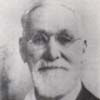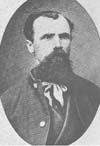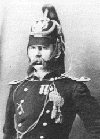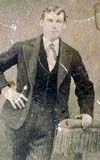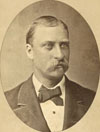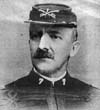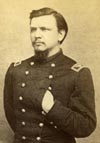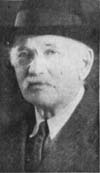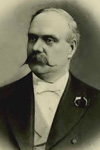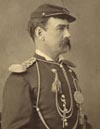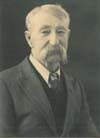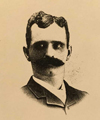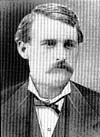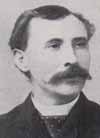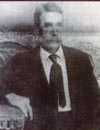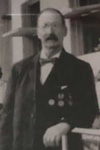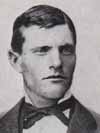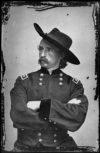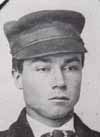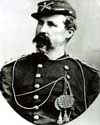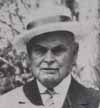William David Nugent (right) was born on November 5, 1852, in Grayson County, Kentucky. He was a Private in Company A who participated in the valley and hilltop fights.
Olans Hansen Northeg committed suicide at Fort Meade, Dakota Territory, on November 5, 1882, and was buried in the Fort Meade National Cemetery in Sturgis, South Dakota. He was a Sergeant in Company G who participated in the valley and hilltop fights.See also 7th Cavalry Troopers in South Dakota.
William G. Abrams married Elizabeth Adelphine Smith Marine on November 6, 1881. He was a Private in Company L who was with the pack train and in the hilltop fight during the battle.
John W. Burkman (left) committed suicide by gunshot in Billings, Montana, on November 6, 1925. He was buried in the Custer National Cemetery in Crow Agency, Montana. He was a Private with Company L who was with the pack train and participated in the hilltop fight.
James J. Pym was born in Garsington, Oxfordshire, England, on November 7, 1847. He was a Private in Company B who was with the pack train and in the hilltop fight, during which he was wounded in the right ankle. He was awarded the Medal of Honor for his actions during the battle.
Henry P. Jones, also known as John Bush, was born in Lancaster, Pennsylvania, on November 8, 1853. He served as a Private in Company I and participated in the pack train escort and the hilltop fight during the battle.
Crawford Selby (left) married Mary Elizabeth Beck on November 10, 1864, in Sturgis, Minnesota, and they were divorced on December 30, 1874. He was a Saddler with Company G when he was killed in the valley fight. Mary remarried in 1880.
Samuel James Foster died on November 10, 1883, near Manchester, Kentucky. He was a Private in Company A and participated in the valley and hilltop fights. He received a gunshot wound in his right arm during the retreat from the valley. He is said to be buried at the head of Arnett’s Fork on top of the mountain in Clay County, Kentucky.
Henry James Nowlan (left) died on November 10, 1898, in Hot Springs, Arkansas, and was buried in the Little Rock National Cemetery. He was the First Lieutenant on the Quartermaster staff and was not present at the battle due to detached service, serving as the Assistant Quartermaster for General Terry.
William H. Gilbert (left) was born on November 11, 1851, in Philadelphia, Pennsylvania. He was a Corporal in Company L who was killed with Custer’s Column during the battle.
Happy Veterans Day to all who served!
